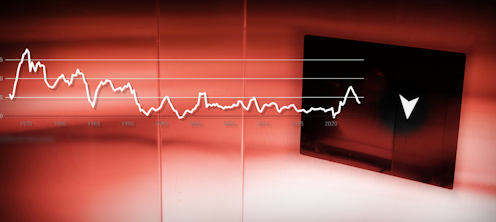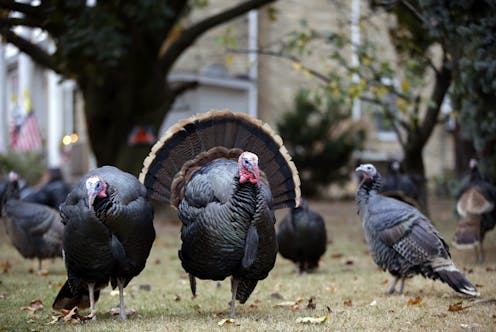Tweets from the afterlife: social networking with the dead
 The possibility of a posthumous digital social life seriously challenges our notions of death.Shimal Ahmed (Fulhi), CC BY-SA
The possibility of a posthumous digital social life seriously challenges our notions of death.Shimal Ahmed (Fulhi), CC BY-SAMedia technologies have operated as both a means of communicating news of a death and memorialising the deceased for a significant period of time, moving from traditional epitaphs, eulogies, wakes and inscription in stone to centuries-old obituaries printed and circulated in newspapers. So where are we now?
Digital commemoration emerged as the internet became readily accessible and an integral part of people’s communicative practices. Initially, during the 90s, it took the form of memorial websites hosted by the families and friends of the deceased.
But this earlier form of commemoration required some proficiency with HTML and content management systems. Therefore online memorials were relatively uncommon, were only authored by a limited number of people, and were fairly static, using only text and still-images
Since then, user-friendly Web 2.0 platforms have enabled digital commemoration to grow in popularity. People are now appropriating a range of social networking sites like Facebook to share in the digital commemoration of the dead. Our research into digital commemoration has found blogs created to commemorate loved ones; videos posted on video sharing sites such as YouTube; and repurposed and memorialised pages on social networking sites.
But what does it mean for the bereaved to be able to engage with a deceased person’s social media profile? Recent research has found that young internet users continue to visit and post to their dead peers’ sites, maintaining a social attachment with the deceased.
These interactions are not unexpected: they echo established social media conventions for connecting and sharing.
But socially networking with the dead carries wider implications. By engaging with the dead on social media we no longer sequester the dead in spaces away from the living. Instead, the dead are integrated into people’s ongoing social relationships.
While some specific memorial sites or services are set for private use by friends and family, others spaces (in particular, public social networking profiles) are not and can be publicly viewed and contributed to by strangers.
The deceased’s online presence therefore becomes distributed. With a large public of family, friends and strangers able to contribute to ongoing memory-making for the deceased, this can potentially generate conflict and require some level of posthumous profile curation.
In addition to these social engagements with the dead, research is considering the uncertain status of the dead online. This work not only explores how the dead are remembered, represented or related to through social media, but also how they persist and continue to participate as social actors within social media platforms.
A person’s online self persists after their bodies have gone, and these digital selves are often managed in a distributed and collective fashion. These new forms of persistence are dynamic and significantly different from older forms of memorialisation such as gravestones, epitaphs, or printed obituaries.
Many millions of deceased profiles exist in a state where they may continue to be modified and maintained through the collaborative actions and interactions of friends and relatives. A range of people may post on the deceased’s social media page, publishing new stories about them and offering different perspectives about someone’s life.
With a range of people offering different stories about a deceased person, this leads to a much more contested and negotiated biography than we would traditionally see in, say, a eulogy or obituary. Instead of having a stable, coherent narrative of someone’s life, these posthumous narratives – and a person’s posthumous biography - evolve over time.
Because of this continued engagement with the dead on social media platforms, scholars have suggested that the dead in social media be thought of as “extreme users”, rather than non-users or former users.
Death does not necessarily result in the termination of an account or, indeed, an end to social presence online. A profile may still be active, people can still post to it and the deceased might still appear in people’s news feed. In contrast to existing norms around the sequestration of the dead, the possibility of a posthumous digital social life seriously challenges our socially and culturally constituted notions of death.
Interestingly, as the numbers of deceased profiles grow, there has been speculation about the date when Facebook will become more like a cemetery than a social network. If Facebook falls out of favour it may be populated by more dead accounts than living accounts. Perhaps then, its business model could shift from social networking to genealogy.
The Conversation is currently running a series on Death and Dying.
Bjorn Nansen receives funding from Australian Research Council.
Martin Gibbs receives funding from the Australian Research Council.
Michael Arnold receives funding from the Australian Research Council.
Tamara Kohn receives funding from ARC
James Meese does not work for, consult to, own shares in or receive funding from any company or organisation that would benefit from this article, and has no relevant affiliations.
Read more http://theconversation.com/tweets-from-the-afterlife-social-networking-with-the-dead-33686














